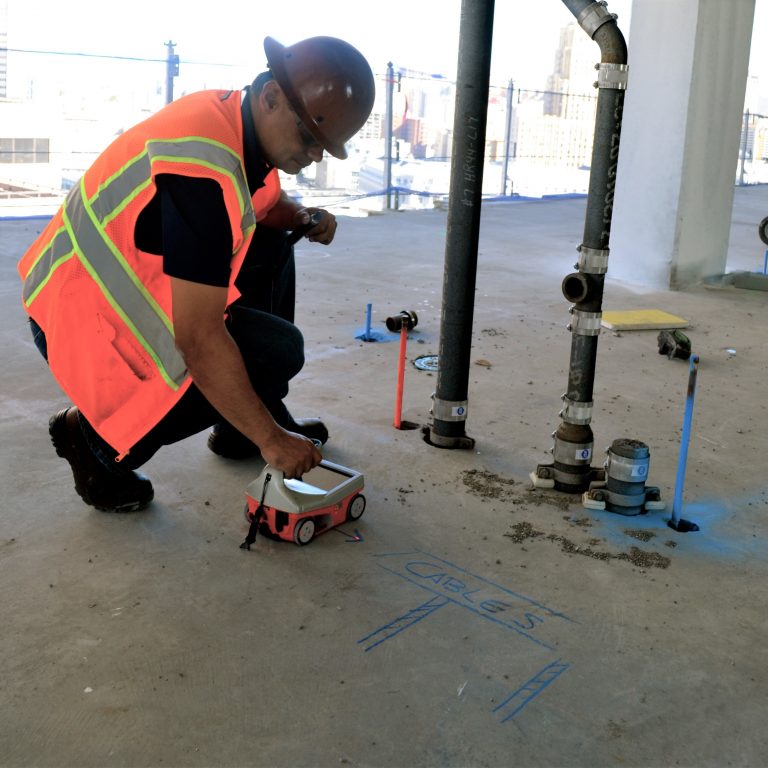Specialist Tips for Optimum Concrete Scanning Outcomes
Specialist Tips for Optimum Concrete Scanning Outcomes
Blog Article
Beyond the Surface Area: Leveraging Advanced Concrete Scanning Techniques for Unmatched Accuracy and Understanding
In the realm of construction and framework upkeep, the quest for accuracy and thoroughness is never-ending. Advanced concrete scanning methods have arised as important tools in this search, using a glance underneath the surface to introduce a world of important insights. By using advanced modern technologies, experts can discover anomalies, assess the problem of concrete structures, and make notified decisions that shape the program of tasks. The ramifications of these techniques prolong much past mere surface-level analyses, promising a depth of precision and understanding that is unparalleled.
Relevance of Advanced Concrete Scanning
The importance of using sophisticated concrete scanning methods exists in the unrivaled precision they provide for finding sub-surface abnormalities and ensuring structural integrity. By employing cutting-edge innovations such as ground-penetrating radar (GPR), electromagnetic induction, and progressed finder imaging, building and construction professionals can delve below the surface of concrete structures with a degree of accuracy that far exceeds standard evaluation techniques. Concrete Scanning. These strategies make it possible for the identification of hidden hazards like rebar deterioration, gaps, avenues, or post-tension cables that can endanger the security and security of a structure over time
In addition, progressed concrete scanning supplies very useful understandings into the overall condition of a concrete element without the need for invasive procedures, lessening the danger of causing damages during the analysis procedure. The ability to pinpoint the specific area and deepness of prospective issues permits targeted fixings and maintenance, ultimately extending the life expectancy of the structure and maximizing its performance. In essence, the relevance of sophisticated concrete scanning can not be overstated in the realm of building and infrastructure upkeep, where precision and integrity are vital.
Types of Cutting-Edge Technologies

Abnormalities and Defect Discovery

Along with GPR, concrete scanning techniques like thermography and impact-echo testing are additionally reliable in finding abnormalities and defects. Thermography utilizes infrared modern technology to recognize variants in surface area temperature, suggesting prospective locations of concern such as delamination or moisture access. On the various other hand, impact-echo screening includes examining acoustic feedbacks to detect voids, cracks, and various other defects within the concrete. By leveraging these advanced techniques, professionals can proactively deal with structural issues, ensuring the longevity and safety and security of concrete frameworks.
Assessing Concrete Problem
Exactly how can engineers precisely evaluate the problem of concrete structures to guarantee their durability and view website safety? Assessing the concrete problem is a critical facet of maintaining framework stability. Numerous innovative concrete scanning techniques are used for this function. Ground-penetrating radar (GPR) is typically used to examine the internal framework of concrete, spotting gaps, cracks, and various other anomalies that might jeopardize its toughness. Furthermore, impact-echo testing can supply insights right into the thickness and stability of concrete aspects. Ultrasonic pulse velocity screening is one more important approach for reviewing concrete quality by gauging the rate of audio waves with the product.
Additionally, visual evaluation stays an essential component of concrete problem evaluation. Engineers aesthetically examine the surface for indicators of degeneration, such as spalling, cracking, or discoloration. Integrating non-destructive screening approaches with aesthetic examinations enables for a thorough analysis of concrete problem, enabling engineers to determine prospective issues early and apply prompt upkeep or fixings. By leveraging these advanced techniques, designers can guarantee the long-term toughness and safety of concrete structures.
Enhancing Decision-Making Processes
In the world of facilities monitoring, maximizing decision-making processes is important for making sure the reliable maintenance and longevity of concrete structures. Boosted decision-making procedures in concrete administration involve making use of advanced scanning techniques to gather in-depth data on the problem of frameworks. By leveraging modern technologies such as ground-penetrating radar and 3D imaging, stakeholders can make enlightened decisions regarding support, substitute, or fixing methods.
These advanced scanning methods Recommended Reading give very useful understandings into the internal structure of concrete, identifying potential problems such as voids, splits, or corrosion that might not be noticeable on the surface. This level of detailed info enables proactive upkeep preparation, lessening the risk of structural failures and boosting the total life expectancy of concrete frameworks.
In addition, by integrating electronic documents and analysis devices into the decision-making process, stakeholders can track the advancement of concrete conditions with time, allowing predictive upkeep approaches and enhancing resource allowance. Ultimately, the integration of innovative concrete scanning strategies improves decision-making procedures by providing unmatched accuracy, understanding, and effectiveness in infrastructure management.
Final Thought
Finally, advanced concrete scanning methods provide unparalleled accuracy and insight in finding abnormalities, problems, and assessing the problem of concrete structures. By leveraging advanced innovations, decision-making procedures can be boosted, bring about more efficient and enlightened remedies for preserving and repairing concrete infrastructure. These strategies play a crucial function in guaranteeing the security and durability of concrete frameworks, making them an essential Look At This tool in the field of building and construction and design.
Furthermore, advanced concrete scanning offers very useful insights right into the overall condition of a concrete aspect without the need for invasive measures, minimizing the risk of causing damage during the evaluation procedure - Concrete Scanning. One more cutting-edge modern technology is 3D X-ray scanning, which offers in-depth pictures of the inner framework of concrete, providing valuable details without the requirement for devastating screening. In Addition, Concrete Cover Meters are used to measure the thickness of concrete cover over reinforcement bars precisely. Improved decision-making procedures in concrete monitoring include making use of sophisticated scanning techniques to collect in-depth information on the problem of structures.In final thought, advanced concrete scanning techniques provide unmatched precision and understanding in identifying abnormalities, defects, and examining the problem of concrete structures
Report this page